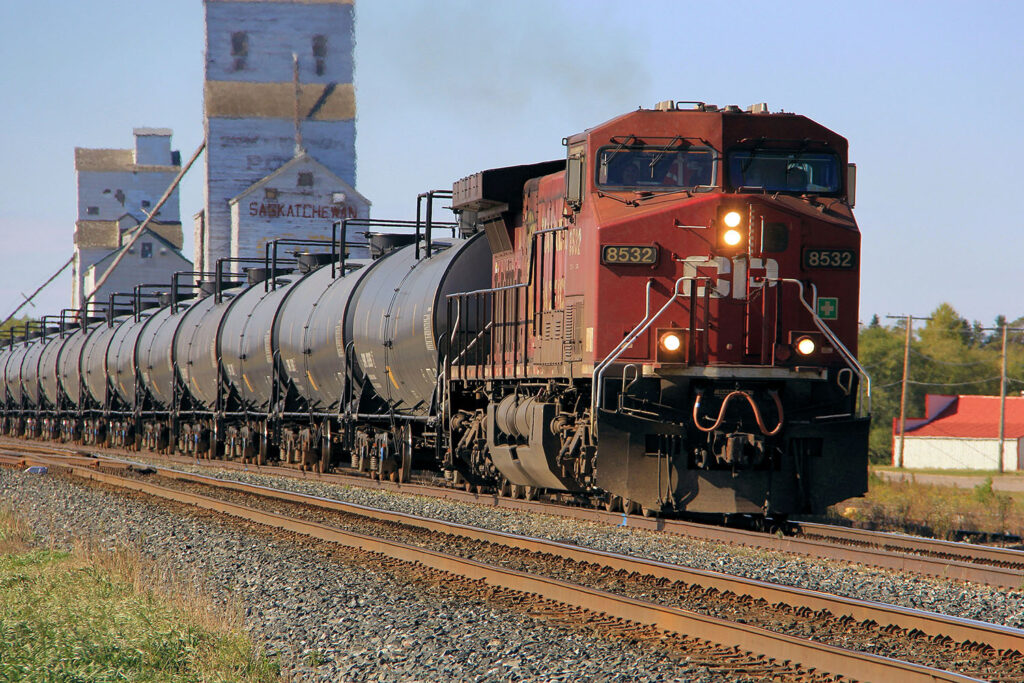No Trains, No Keystone XL?
Globe and Mail
On hearing of the catastrophe in Lac-Mégantic, our first thoughts were with the city’s residents who had lost loved ones, friends, homes, and businesses. The accident was one of those jaw-dropping events that we all have trouble fully comprehending—whether we’re trying to imagine its awful consequences or ponder the apparent incompetence, perhaps even criminality, that caused it.
But because the train was carrying crude oil to a New Brunswick refinery, second and third thoughts inevitably turn to the event’s larger implications for continental energy security, oil transportation and, of course, the oil sands industry.
The fires had barely been extinguished when commentators started arguing that the tragedy proved pipelines are a safer way to carry oil than rail. So US President Obama should approve the Keystone XL pipeline to ship Alberta’s bitumen to refineries in the southern United States.
But this logic is completely wrong. In reality, if President Obama adheres to the criterion that he has said will guide his decision on whether to approve Keystone XL, the Lac-Mégantic accident effectively weakens rather than strengthens the case for the pipeline and therefore lowers, perhaps dramatically, the odds he’ll approve it.
In his watershed speech on US climate policy at Georgetown University in late June, Obama stipulated that the pipeline won’t be approved if it would lead to a net increase in carbon emissions. Remarking on the controversy surrounding Keystone XL, he noted that the US State Department is in the final stages of evaluating the proposal. “But I do want to be clear,” he continued. “Allowing the Keystone pipeline to be built requires a finding that doing so would be in our nation’s interest. And our national interest will be served only if this project does not significantly exacerbate the problem of carbon pollution. The net effects of the pipeline’s impact on our climate will be absolutely critical to determining whether this project is allowed to go forward.”
In other words, the “net effects of the pipeline’s impact on our climate,” not the pipeline’s safety, will be the Obama Administration’s key criterion when it decides whether to approve Keystone XL.
After the President delivered his speech, many supporters of the oil sands industry breathed a sigh of relief, because the State Department has, in fact, already concluded that the pipeline’s net impact on climate would be near zero. In its Supplemental Environmental Impact Statement for the Keystone XL Pipeline, released on March 1 this year, the agency said the pipeline “would result in no substantive change in global greenhouse gas emissions.”
The report arrived at this conclusion by following a very specific and extraordinarily detailed chain of logic and analysis. But the essence of its argument is this: if Keystone XL isn’t approved, the oil sands industry will send its product out of Alberta by other means. So “approval or denial of the proposed Project is unlikely to have a substantial impact on the rate of development in the oil sands.” And if Keystone XL won’t make any difference to the oil sands’ rate of development, then the pipeline’s net impact on carbon emissions will be zero. Put differently, future carbon emissions from the oil sands are locked in, whether the pipeline is built or not.
A large fraction of the State Department’s report is devoted to analyzing the viability of alternative ways of moving oil sands products out of Alberta, should Keystone XL not go ahead. And it’s here were the implications of the Lac- Mégantic catastrophe weigh most heavily—because the alternative that ranks at the top of the list is rail. The report says explicitly that rail can do the entire job, if necessary: “Rail and supporting non-pipeline modes should be capable of providing the capacity need to transport all incremental Western Canadian . . . crude oil production to markets if there were no additional pipeline projects approved.”
Few people in in Canada seem to fully appreciate what the report actually says about the magnitude of projected oil sands shipments by rail, but its figures are astonishing. Shipping the amount of oil sands product that would otherwise be carried by Keystone would require thirteen 100-car trains a day; the loading facilities for these trains would cover over 14 square kilometers. By extrapolation, shipping entirely by rail the projected growth by 2030 in oil sands production—about 3 million barrels of extra output daily—would require over fifty trains a day, with loading facilities covering more than 60 square kilometers.
The Lac-Mégantic tragedy will make such enormous rail shipment of oil products far less acceptable to the public in both Canada and the US. So the main alternative to Keystone XL that the State Department has identified is unlikely to be available at anything like the scale needed. If so, the pipeline’s approval would enable expansion of oil sands’ extraction that wouldn’t otherwise occur, and it would therefore lead to a large net increase in the oil sands’ carbon emissions—violating President Obama’s main criterion for approving the project.

Topics
Energy
Environmental Stress and Conflict
